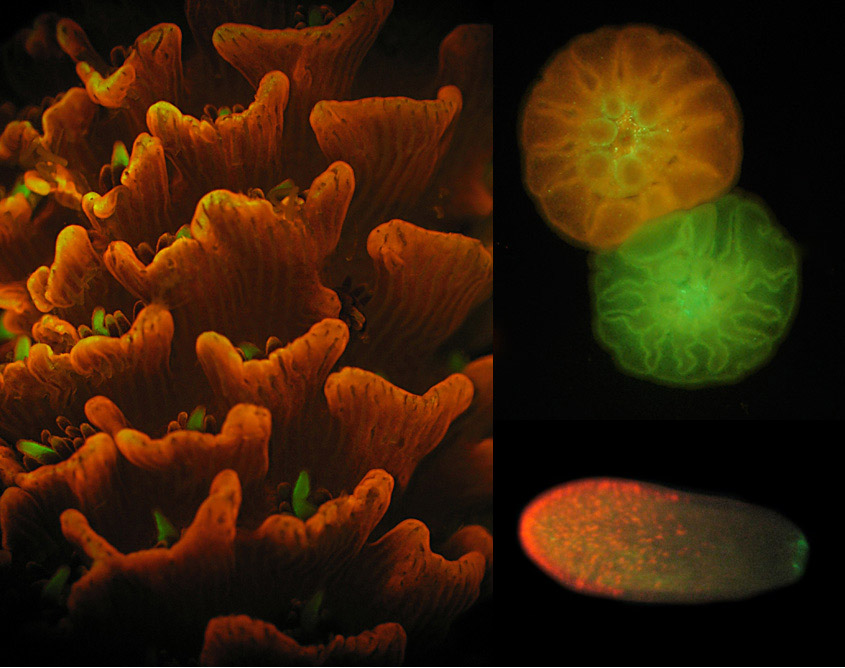It is common knowledge in the coral reef aquarium world that corals fluoresce in a multitude of colors, but coral larvae fluoresce as well. Green Fluorescent Protein (GFP) is one of the most common fluorescent pigments found in the natural world, including corals and the red fluorescence is actually from the excitation of the photosynthetic pigment Chlorophyl, from the Zooxanthellae inside corals.
The larvae of corals produced from broadcast spawning naturally start out fluorescing only green, but as they become infected with zooxanthellae the red fluorescence begins to mask the green color of coral tissues. New research published in the Proceedings of Royal Society B: Biological Sciences showed that the degree of red versus green fluorescence in coral larvae could help predict how soon coral larvae were ready to settle.
The image above shows an Acropora millepora branch at left under fluorescence lighting, with two newly settled coral larvae at top right showing the difference between green and red fluorescence and at bottom right is a green coral larvae just beginning to show the red spots of fluorescence as zooxanthellae begins to infect its tissue. When presented with a biological settling cue like ground up coralline algae, coral larvae with just green fluorescence were ready to settle down but the redder larvae, the ones with zooxanthellae infection and therefore some short term food supply, were not quite ready to settle meaning that they could disperse much further away from their parent reef.
The results of this coral larvae fluorescence study could help researchers better understand how populations of corals are moving towards the poles, and it may also help future captive coral breeders know when their captive spawned coral larvae are ready to settle.
[via Scientific American]




